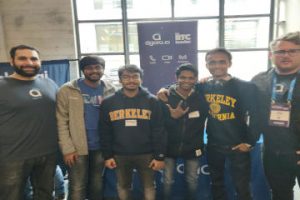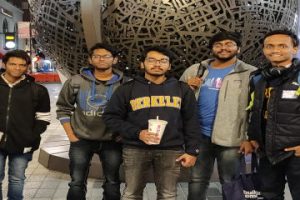“Nation building requires ground-breaking research.” DRDO Chairman, Dr. G. Satheesh Reddy
In a meeting with SRM AP faculty, Dr. G. Satheesh Reddy drew attention to the prestigious ‘Make in India’ initiative, called for research on futuristic technologies for the nations benefit, and encouraged SRM AP to emerge as a hub for new technology development. Dr. G. Satheesh Reddy is eminently qualified to speak of matters like aligning future university led research objectives with national priorities. He holds four key national government portfolios; He is Secretary to the Government of India in the department of Defence R&D; Chairman, Defence Research Development Organisation (DRDO); Director General, Aeronautical Development Agency (ADA) and Scientific Advisor to the Defence Minister (RM).
- Published in News, Research News
Nobel Lectures, Aula Magna, Stockholm University, Sweden, December 2018
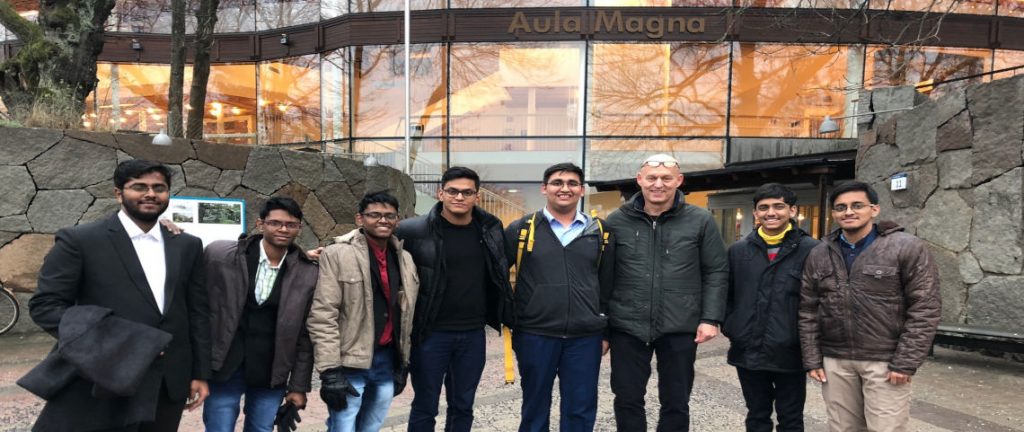
SEAS students – Saurabh Ghanekar, Aneek Banerjee, Saptarshi Mazumder, Rajarshi Mazumder, Koushik Bhargav and Saurav Raj upon invitation by Prof. Bertil Andersson, (Pro-Chancellor of SRM AP, President Emeritus of NTU, Singapore and ex-Chair of the Nobel Committee for Chemistry) attended lectures by the 2018 laureates in Physics, Chemistry and Economics.
- Published in News
SRM AP TEAM WIN TOP PRIZE AT DEVELOPER WEEK HACKATHON, SAN FRANCISCO
|
|
Koushik Bhargav Muthe, CSE and his team from Next Tech Lab – Saptarshi Mazumder, CSE, Rajarshi Mazumder, CSE, Agniswar Paul, ECE, Souradeep Das, SRM KTR, CSE, participated in the Developer Week Hackathon (one of the world’s largest challenge driven hackathons) and won the top prize with an award of $1,000 from Agoraio. The team developed a Blockchain based game that incentivises people to buy products and was selected as the best hack by the Agoraio panel. “We built an Ethereum based card trading game for shoppers that helps sellers win over more customers. We did this by incorporating the Agoraio’s chatting platform into our game.” says Koushik Bhargav.
AND ANOTHER ONE! THE BEST BLOCKCHAIN UTILITY HACK
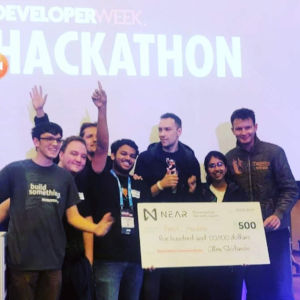
Miran, Niladri, and Sejal of Next Tech Lab from KTR – A Facebook developer and an entrepreneur, were among the top 5 teams at the Hackathon with 150+ teams and took the first prize for the “Best Blockchain Utility Hack” with a bounty of $500 from Near Protocol. The product will be shown in all developer week magazines. The team made a blockchain based contract system for making corporate or social contracts whereby both parties receive an email to accept or reject. Once both parties accept, an entry on the blockchain is made and the contract can be recovered anytime.
EARLIER IN DENVER
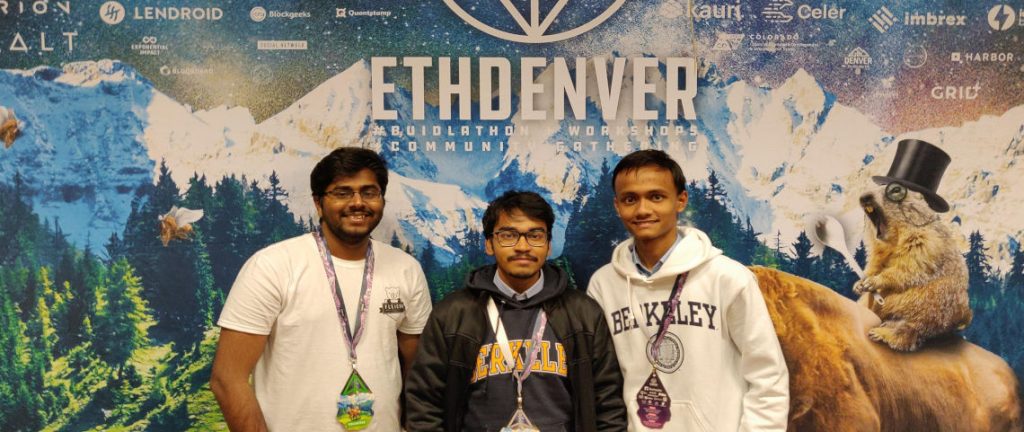
Koushik Bhargav CSE SRM AP and head of Satoshi lab at Next Tech lab, Sauradeep Das, CSE SRM KTR and Agniswar Paul, CSE SRM AP (all three presently in UC Berkeley for the 2019 semester abroad program) taking in the technological wonders at ETH Denver, Colorado, the world’s biggest Ethereum hackathon and conference, Feb.14-17. “It was one the best conferences I have attended, got to meet amazing people working on Blockchain technology from all over the world,” says Koushik. It was great because Satoshi lab focuses completely on Blockchain technology.” Koushik and his colleagues including Miran Junaidi shared ideas with developers, Blockchain startups, mentors and developing hacks. “Many more amazing events lined up for our semester in University of California, Berkeley.”
- Published in News
SRM AP’s intra-faculty Data Science course now in collaboration with UC Berkeley
This year SRM AP introduces Data Science for all students in the School of Liberal Arts and Basic Sciences (SLABS). Supported by intellectual capital of colleagues at the University of California- Berkeley, SRM AP’s Data Science course comprises lectures and labs that encourage discussion as students get comfortable in simple programming using Python.
“Recognizing that data science is an essential building block for critical applications of today and the future we are offering it as a foundation course for all SLABS students”, says SLABS Associate Dean, Dr. Shailender Swaminathan.
- Published in News


